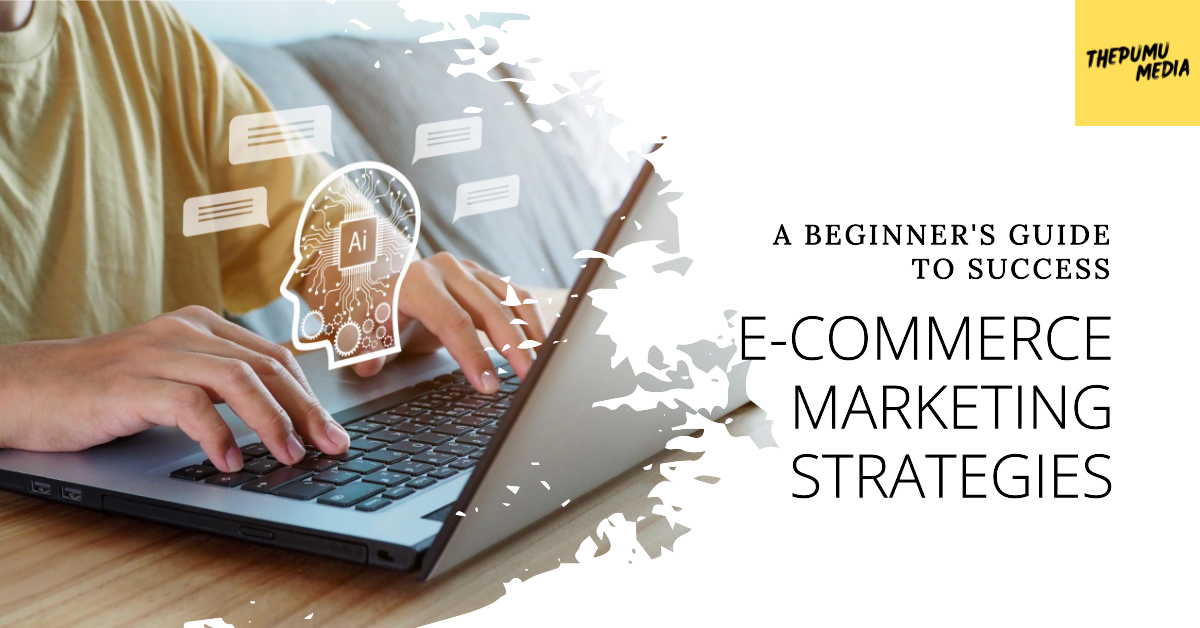In today’s digital age, the world of e-commerce is thriving. Whether you’re a small business owner just starting or an established brand looking to expand your online presence, e-commerce marketing is essential. In this beginner-friendly guide, we’ll walk you through the fundamentals of e-commerce marketing strategies, explaining each concept in simple terms. Plus, we’ve included 10 frequently asked questions (FAQs) to address common queries that beginners often have.
E-commerce Marketing: What Is It?
E-commerce marketing involves the use of various digital strategies to promote and sell products or services online. The goal is to attract potential customers, engage with them, and ultimately convert them into loyal buyers. Here are some key strategies to kickstart your e-commerce journey:
1. Create a User-Friendly Website
Your website is your digital storefront. Ensure it’s easy to navigate, loads quickly, and is mobile-responsive. User-friendly websites increase the chances of conversions.
2. Optimize for Search Engines (SEO)
SEO involves improving your website’s visibility on search engines like Google. Use relevant keywords, meta descriptions, and high-quality content to rank higher in search results.
3. Leverage Social Media
Build a strong presence on platforms like Facebook, Instagram, and Twitter. Share engaging content, run targeted ads, and interact with your audience to drive traffic to your site.
4. Email Marketing
Collect email addresses and send out newsletters, promotions, and product updates. Personalized emails can boost sales and customer retention.
5. Pay-Per-Click (PPC) Advertising
With PPC ads, you pay when users click on your ads. Google Ads and Facebook Ads are popular options. Set a budget and target specific demographics.
6. Content Marketing
Create informative and entertaining blog posts, videos, and infographics that relate to your products. Valuable content can attract and retain customers.
7. Influencer Marketing
Partner with social media influencers to promote your products. Their followers trust their recommendations, increasing your credibility.
8. Remarketing
Target users who have previously visited your site but didn’t make a purchase. Remarketing ads can remind them of your products.
9. Analytics and Tracking
Use tools like Google Analytics to monitor your website’s performance. Analyze user behavior, conversion rates, and sales data to make informed decisions.
Frequently Asked Questions (FAQs)
Q1: What’s the difference between e-commerce and traditional retail?
A1: E-commerce is the buying and selling of products or services online, while traditional retail involves physical stores. E-commerce offers a wider reach and often lower operating costs.
Q2: How can I choose the right e-commerce platform for my business?
A2: Consider factors like your budget, the type of products you sell, and your technical expertise. Popular e-commerce platforms include Shopify, WooCommerce, and BigCommerce.
Q3: Is it necessary to invest in paid advertising?
A3: While it’s not mandatory, paid advertising can accelerate your growth. Start small and gradually increase your budget as you see results.
Q4: What is a conversion rate, and why is it important?
A4: A conversion rate is the percentage of visitors who take a desired action, such as making a purchase. It’s crucial because it directly affects your sales and revenue.
Q5: How can I build trust with my online customers?
A5: Display trust signals like customer reviews, secure payment options, and clear return policies. Provide excellent customer service and resolve issues promptly.
Q6: What is SEO, and why do I need it?
A6: SEO (Search Engine Optimization) helps your website rank higher in search results. It’s essential for attracting organic (unpaid) traffic and increasing visibility.
Q7: How often should I send marketing emails?
A7: The frequency depends on your audience and content. Start with a monthly newsletter and adjust based on engagement and customer preferences.
Q8: Can I do e-commerce marketing on a tight budget?
A8: Yes, you can. Start with free or low-cost strategies like social media marketing and content creation. Gradually invest as your business grows.
Q9: Are there any legal requirements for e-commerce businesses?
A9: Yes, you may need to comply with laws related to taxes, privacy, and consumer protection. Consult legal experts or government resources for guidance.
Q10: How long does it take to see results from e-commerce marketing?
A10: Results vary, but it’s common to see improvements within a few months. Consistency and ongoing optimization are key to long-term success.
In conclusion, e-commerce marketing doesn’t have to be overwhelming for beginners. Start with a solid website, explore various marketing channels, and use data to refine your strategies. As you gain experience and understand your audience better, you’ll be on your way to e-commerce success.


